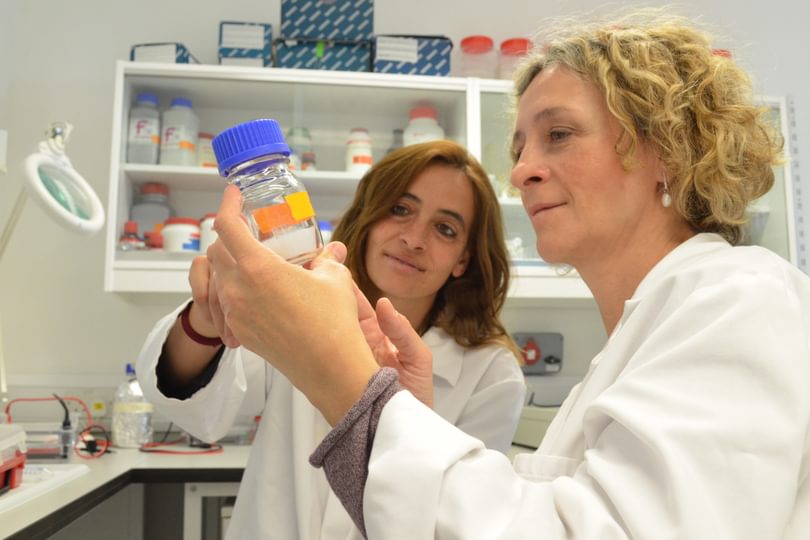
An Oxford Martin School visiting fellowship has enabled two academics to kickstart an experimental approach to tackling a form of blindness that affects one in four thousand people worldwide.
Dr Sonia Trigueros, Co-Director of the Oxford Martin School Programme in NanoMedicine, is collaborating with the University of Barcelona’s Professor Gemma Marfany, a human molecular geneticist, to study whether nanotechnology can be used to treat the hereditary retinal disorder retinitis pigmentosa.
Professor Marfany’s month-long visiting fellowship at the Oxford Martin School meant the pair could investigate the possibility of using Dr Trigueros’ cancer treatment method – using carbon nanotubes to deliver drugs – for gene therapy.
Dr Trigueros wraps DNA around nanostructures to protect them. But she realised the method could have other applications, and that the DNA “couldn’t only be structural but that it could also be used for genetic information.”
Their aim is to re-introduce correct genetic information into the retinal cells of retinitis pigmentosa patients, in whom the disease has caused genetic mutations. Because in most cases the gene that causes the disease is recessive, it can be superseded by the new, non-mutated genetic information. “We want to prove that it enters the cell and recovers the function of the cell,” says Professor Marfany.
Retinal cells are neurons, and die if they start to malfunction due to the genetic mutation. “They are very specialised cells,” says Dr Trigueros. “If we manage to do this we are opening up a new way for gene therapy using nanotechnology.”
Current methods of introducing new genetic material include using a virus to carry it, which is introduced using a sub-retinal micro-injection. “We want to see whether we can find an easier and less aggressive method,” says Dr Trigueros.
Professor Marfany says the visiting fellowship has allowed them to grow their knowledge together, “step by step". “Our questions are relevant for our project but they can be used for many others,” she says. “Our aim isn’t just to treat this disease but to find answers to questions that will be relevant for many other areas of research.”
Being able to work together for a month had enabled them to map out the five-year timescale of the project, and to get to know each other’s research in more depth. Dr Trigueros explained: “We realised the importance of seeing someone on a daily basis to build a very risky but potentially high impact project. We needed a month and the funding for the visiting fellowship has enabled us to do this.”